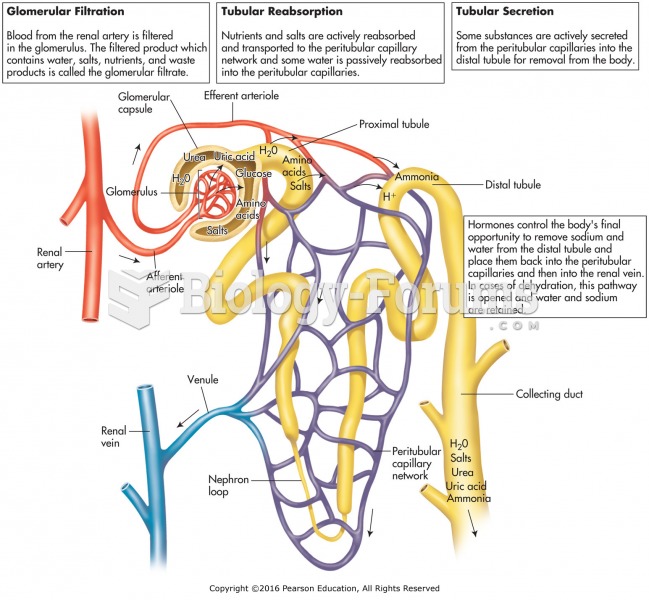Answer to Question 1
Correct Answer: 1,2,3,4
Rationale 1: Prophylactic antifungal therapy is sometimes indicated for high-risk clients, such as those receiving prolonged therapy with corticosteroids.
Rationale 2: Prophylactic antifungal therapy is sometimes indicated for high-risk clients, such as those with HIV or AIDS.
Rationale 3: Prophylactic antifungal therapy is sometimes indicated for high-risk clients, such as those being treated with antineoplastic medications.
Rationale 4: Prophylactic antifungal therapy is sometimes indicated for high-risk clients, such as those who received an organ transplantation.
Rationale 5: A client who is status post an appendectomy is not at increased risk for developing a systemic fungal infection and would not be a candidate for prophylactic antifungal therapy.
Global Rationale: The past few decades have seen a dramatic rise in the incidence of fungal infections due to AIDS, aggressive cancer chemotherapy, the widespread use of indwelling intravenous (IV) catheters, and the use of broad-spectrum antibiotics. Corticosteroids and immunosuppressive medications associated with transplant surgery also predispose the patient to fungal infections. Appendectomy is unlikely to increase risk.
Answer to Question 2
Correct Answer: 2
Rationale 1: Even though the line of defense of the skin is partially removed, there is no information that suggests the client is immunocompromised and at great risk.
Rationale 2: Chemotherapy will decrease the client's immune response, thereby increasing susceptibility to fungal infection.
Rationale 3: Adolescents have a healthy immune response. The fractured femur does not increase the risk for infection.
Rationale 4: Anemia does not increase the risk of fungal infection.
Global Rationale: Chemotherapy will decrease the client's immune response, thereby increasing susceptibility to fungal infection. Even though the line of defense of the skin is partially removed, there is no information that suggests the client is immunocompromised and at great risk. Adolescents have a healthy immune response. The fractured femur does not increase the risk for infection. Anemia does not increase the risk of fungal infection.







